BOOKS
“Surrealism comes from the reality of Latin America”. Garcia Marquez
ECUADOR & GALAPAGOS BOOKS
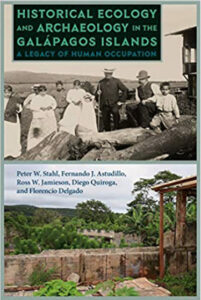
Historical Ecology and Archeology in the Galapagos Islands
The Galápagos Islands are one of the world’s premiere nature attractions, home to unique ecosystems widely thought to be untouched and pristine. Historical Ecology and Archaeology in the Galápagos Islands reveals that the archipelago is not as isolated as many imagine, examining how centuries of human occupation have transformed its landscape.

The Mapmaker's Wife: A True Tale Of Love, Murder, And Survival In The Amazon
In the early years of the 18th century, a band of French scientists set off on a daring, decade-long expedition to South America in a race to measure the precise shape of the earth. Like Lewis and Clark's exploration of the American West, their incredible mission revealed the mysteries of a little-known continent to a world hungry for discovery.

Travels Amongst the Great Andes of the Equator
The nineteenth-century mountaineer illuminates the customs of the Indians of Ecuador while recording his ascents of Chimborazo, Cotopaxi, Cayambe, and other Andean peaks

Head Hunters of the Amazon
Headhunters of the Amazon (1921) which tells an extraordinary story that simply would not get published today even if any contemporary explorer or adventurer had the opportunity or the cojones to do what Up De Graaf and his companions did so blithely a century ago. However, this is not just a schoolboy tale of derring-do, but contains much fascinating socio-cultural information about the eponymous head-hunters of the title and some fascinating cryptozoological snippets.

Measure of the Earth: The Enlightenment Expedition That Reshaped Our World
In the early eighteenth century, at the peak of the Enlightenment, an unlikely team of European scientists and naval officers set out on the world’s first international, cooperative scientific expedition. Intent on making precise astronomical measurements at the Equator, they were poised to resolve one of mankind’s oldest mysteries: the true shape of the Earth.
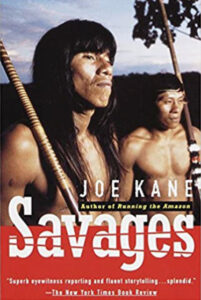
Savages
Savages is a firsthand account, by turn hilarious, heartbreaking, and thrilling, of a small band of Amazonian warriors and their battle to preserve their way of life. Includes eight pages of photos.
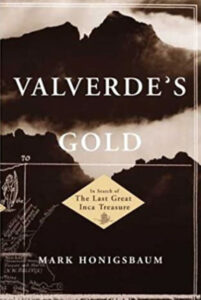
Valverde's Gold: In Search of the Last Great Inca Treasure
In 1887, two British sailors landed on the coast of Ecuador and set off across the Andes on a secret mission. Their task was to locate an immense hoard of Inca gold which had been lost for hundreds of years. A botanist who had recently returned from Ecuador had provided them with documents proving it still existed and gave them the route to find it. And find it they did - but both perished before they could make their way back to the cave a second time.

Floreana: A Woman's Pilgrimage to the Galapagos
The remarkable first-hand account of Margret Wittmer, who settled the island of Floreana in the Galapagos-600 miles from the mainland of Ecuador. It took Wittmer and her family weeks to travel to the island in 1932; they battled with the ties for three full days before they could land. Wittmer and her husband left their home and family in Germany, seeking a new life in a place not yet touched by civilization. Their first home was a cave, previously abandoned by pirates. They planted their first garden, only to find it torn up continually by wild boars
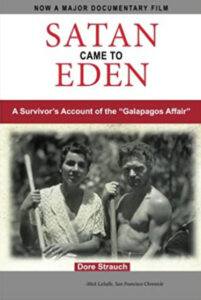
Satan Came to Eden: A Survivor's Account of the "Galapagos Affair"
In 1929, Dr. Frederick Ritter and Dore Strauch fled the social and economic turmoil of post-World War I Germany, choosing to abandon the chaos of modern civilization, as well as their respective spouses. They began a quest to reclaim the purity of nature for themselves. They chose as their Eden the dry, uninhabited volcanic island of Floreana in the Galapagos chain. Their experiences in their new paradise—and the ensuing scandals—would captivate the Western world.
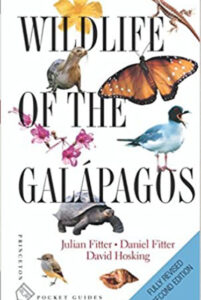
Wildlife of the Galápagos
Since its first publication more than a decade ago, Wildlife of the Galápagos has become the definitive, classic field guide to the natural splendors of this amazing part of the world. Now fully updated, this essential and comprehensive guide has been expanded to include the more than 400 commonly seen birds, mammals, reptiles, invertebrates, and plants, and other coastal and marine life of this wondrous archipelago. Over 650 stunning color photographs, maps, and drawings are accompanied by accessible, descriptive text.

The Panama Hat Trail
Critically acclaimed author Tom Miller reveals the making and marketing of one Panama hat, from the straw fields of Ecuador’s coastal lowland to a hat shop in Southern California. Along the way, the hat becomes a literary device allowing Miller to give us his impressions from the tributaries of the Amazon to the mountainsides of the Andes. The Panama Hat Trail is at once a study in global economics and a lively travelogue.

The Galápagos: A Natural History
Charles Darwin called it "a little world within itself." Sailors referred to it as "Las Encantadas"- the enchanted islands. Lying in the eastern Pacific Ocean, straddling the equator off the west coast of South America, the Galágos is the most pristine archipelago to be found anywhere in the tropics. It is so remote, so untouched, that the act of wading ashore can make you feel like you are the first to do so.

Reef Fish Identification: Galapagos
Updated enlarged 2nd Edition of Reef Fish Identification Galapagos is a comprehensive field guide to the fish life in the rich waters that bath the Galapagos Archipelago. This book is the third in the series of Reef Fish Identification books by the authors.
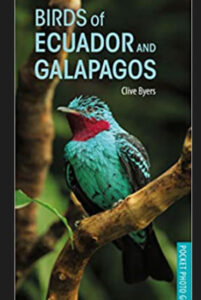
Birds of Ecuador and Galapagos
Although it is one of South America's smallest countries, Ecuador is home to nearly 1,600 species of birds. This is thanks to the huge variety of habitats created by the Andes. The country is a birder's paradise and an increasingly popular tourist destination. Areas such as Tandayapa, Mindo and La Selva are renowned for their birdwatching potential and boast such dramatic species as Toucan Barbet, Andean Cock-of-the-Rock, Andean Condor, Giant Conebill and Ocellated Tapaculo, plus an array of brightly coloured manikins, cotingas, tanagers and hummingbirds. Offshore, the Galapagos Islands provide one of the world's greatest wildlife spectacles.Two hundred and fifty-two of Ecuador and the Galapagos' most interesting and spectacular birds are featured in this concise and easy-to-use guide.
CHILE BOOKS
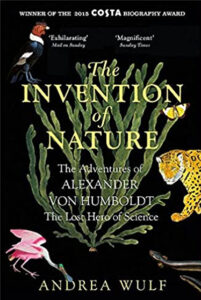
The Invention of Nature: The Adventures of Alexander von Humboldt, the Lost Hero of Science
Costa & Royal Society Prize Winner
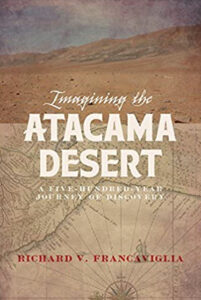
Imagining the Atacama Desert: A Five-Hundred-Year Journey of Discovery
Widely regarded as the driest place on earth, the seemingly desolate Atacama Desert of Chile is a place steeped in intrigue and haunted by collective memories. This book, based on archival research and the author's personal field experiences, brings together the works of geographers, historians, anthropologists, botanists, geologists, astronomers, novelists, and others to offer a nuanced understanding of this complex desert landscape.

A Wildlife Guide to Chile: Continental Chile, Chilean Antarctica, Easter Island, Juan Fernández Archipelago
This is the first comprehensive English-language field guide to the wildlife of Chile and its territories--Chilean Antarctica, Easter Island, Juan Fernández, and San Félix y San Ambrosio. From bats to butterflies, lizards to llamas, and ferns to flamingos, A Wildlife Guide to Chile covers the country's common plants and animals. The color plates depict species in their natural environments with unmatched vividness and realism.
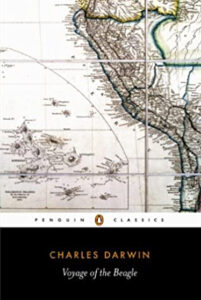
The Voyage of the Beagle
When HMS Beagle sailed out of Devonport on 27 December 1831, Charles Darwin was twenty-two and setting off on the voyage of a lifetime. His journal, here reprinted in a shortened form, shows a naturalist making patient observations concerning geology, natural history, people, places and events. Volcanoes in the Galapagos, the Gossamer spider of Patagonia and the Australasian coral reefs - all are to be found in these extraordinary writings. The insights made here were to set in motion the intellectual currents that led to the theory of evolution, and the most controversial book of the Victorian age: The Origin of Species. This volume reprints Charles Darwin's journal in a shortened form.
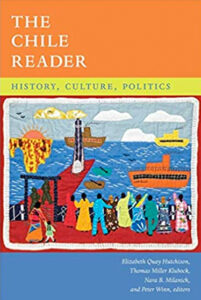
The Chile Reader: History, Culture, Politics
The Chile Reader makes available a rich variety of documents spanning more than five hundred years of Chilean history. Most of the selections are by Chileans; many have never before appeared in English. The history of Chile is rendered from diverse perspectives, including those of Mapuche Indians and Spanish colonists, peasants and aristocrats, feminists and military strongmen, entrepreneurs and workers, and priests and poets.
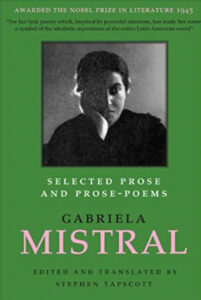
Selected Prose and Prose-Poems
The first Latin American to receive a Nobel Prize for Literature, the Chilean writer Gabriela Mistral (1889-1957) is often characterized as a healing, maternal voice who spoke on behalf of women, indigenous peoples, the disenfranchised, children, and the rural poor. She is that political poet and more: a poet of philosophical meditation, self-consciousness, and daring. This is a book full of surprises and paradoxes.

My Invented Country: A Nostalgic Journey Through Chile
A highly personal memoir of exile and homeland by bestselling author Isabel Allende In My Invented Country Isabel Allende evokes the magnificent landscapes of her country, a charming, idiosyncratic Chilean people with a violent history and indomitable spirit, and the politics, religion, myth and magic of her homeland that she carries with her even today
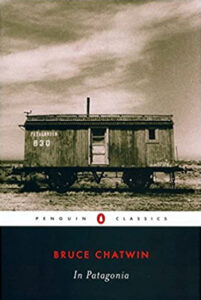
In Patagonia
An exhilarating look at a place that still retains the exotic mystery of a far-off, unseen land, Bruce Chatwin’s exquisite account of his journey through Patagonia teems with evocative descriptions, remarkable bits of history, and unforgettable anecdotes. Fueled by an unmistakable lust for life and adventure and a singular gift for storytelling, Chatwin treks through “the uttermost part of the earth”—that stretch of land at the southern tip of South America, where bandits were once made welcome—
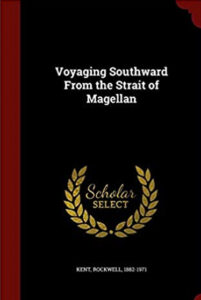
Voyaging Southward From the Strait of Magellan
This work has been selected by scholars as being culturally important, and is part of the knowledge base of civilization as we know it. This work was reproduced from the original artifact, and remains as true to the original work as possible. Therefore, you will see the original copyright references, library stamps (as most of these works have been housed in our most important libraries around the world), and other notations in the work.
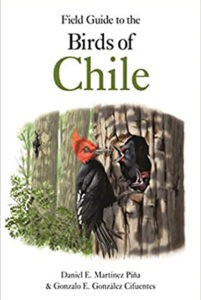
Field Guide to the Birds of Chile
With its diverse range of habitats, Chile boasts a remarkable variety of breeding and visiting birds, from penguins to hummingbirds, making the country one of South America’s top birding destinations. From the Chilean Tinamou and Juan Fernandez Firecrown to the Magellanic woodpecker, this comprehensive and authoritative field guide covers every one of Chile’s 468 recorded species, including vagrants. All are illustrated in superb detail in 89 color plates, which feature every major plumage variation

